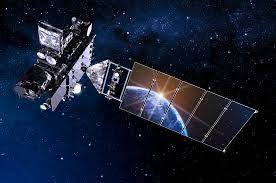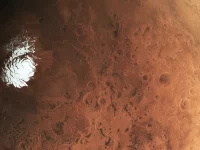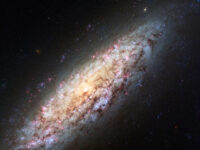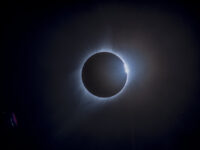In the current age, satellites are an integral part of a person’s life. These useful tools improve and save lives around the globe. They provide GPS and weather forecast data, enable wireless financial transactions, and allow us to predict and track natural disasters. There are 8,261 satellites currently orbiting Earth, and 4,852 of them are active as of January 2022. This is a staggering amount that many scientists find concerning, considering that major aerospace company SpaceX has only sent out about 13% of the satellites they plan to.
As more objects have entered Earth’s orbit, the likelihood of collisions has increased. Satellites orbit the Earth at around 7,000 miles per hour, and operators have to be careful about maintaining a safe distance from other satellites to prevent crashes. The consequences of two satellites colliding go beyond the disaster of losing these satellites; as more collisions occur, the risk of future collisions increases. A crash will cause the satellites to splinter into pieces, creating additional obstacles for other satellites and beginning a chain reaction of more collisions. To prevent this, satellite companies calculate how likely a crash is to occur and then maneuver based on those probabilities. In 2022, the number of predicted events of satellites and other space debris becoming dangerously close was 134% greater than in 2020. While these predictions were not all near-collisions, this increase highlights that managing traffic in space is becoming more difficult.
Contributing to this space traffic challenge is SpaceX, an American aerospace company founded by Elon Musk in 2002. Among SpaceX’s famous products are its Starlink satellites, designed to provide internet service around the globe. There are currently over 5,000 Starlink satellites in orbit, and the company hopes to eventually launch up to 42,000. SpaceX claimed that its Starlink satellites had enough fuel to perform 350 collision avoidances in their five-year lifetimes. From 2020 to 2022, each satellite had to perform an average of 12 avoidances. However, this number is increasing nonlinearly each year as more satellites launch into orbit, and the Starlink satellites might run out of fuel earlier than their expected lifetimes as they must perform more collision avoidances. This potential impending disaster underlines the need for research into better methods to orchestrate this web of satellites to minimize collisions.
“This potential impending disaster underlines the need for research into better methods to orchestrate this web of satellites to minimize collisions.”
New satellites are not the only thing that scientists find concerning, however. The European Space Agency estimates that there are 36,500 pieces of space debris larger than 4 inches orbiting the Earth. This debris comes from old satellites and rocket parts, and this number rises every time there is a collision that causes satellites to shatter, launching materials in all directions. With more space debris, the risk of collisions also grows. There was a close call on January 27th, 2023, when two large fragments of space junk almost collided. Scientists were watching with fear as these two objects approached each other, and if they had not missed by 20 feet, they would have launched large pieces of debris into orbit for centuries, causing a ripple effect that could have produced increasingly more space pollution. These heightened dangers emphasize a severe need to find methods to eliminate space debris.
The increase in new satellites mixed with discarded space debris has left Earth’s orbit as a dangerous minefield that needs constant watch to prevent crashes. There is no straightforward answer to determine how many satellites can safely orbit the planet. Many factors go into this, like whether it is possible to clear current space debris, or whether space companies can design satellite constellations more collaboratively to minimize how close they get. Unless more effort is put into addressing this issue, humanity may discover the maximum number of satellites the “hard way.”






